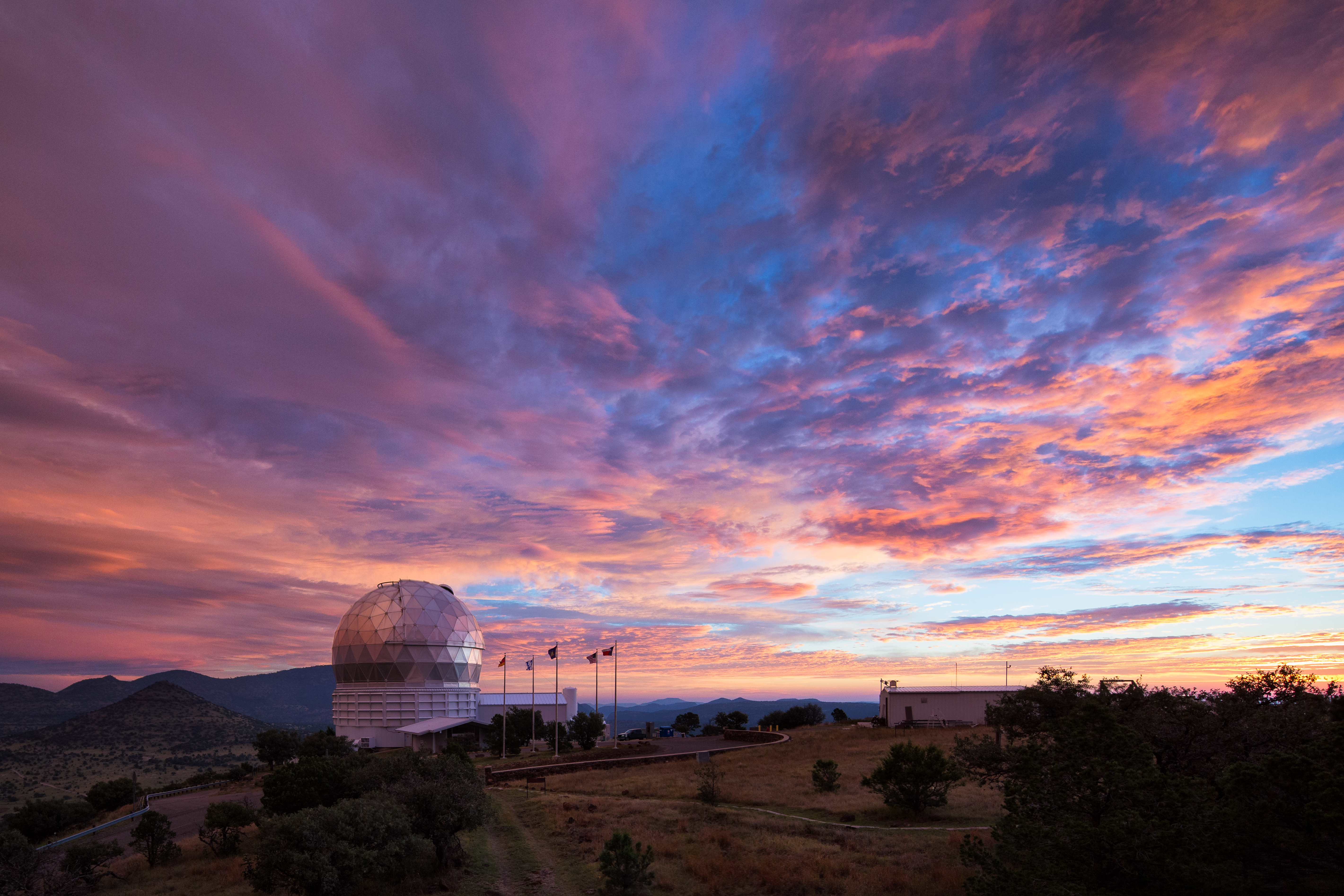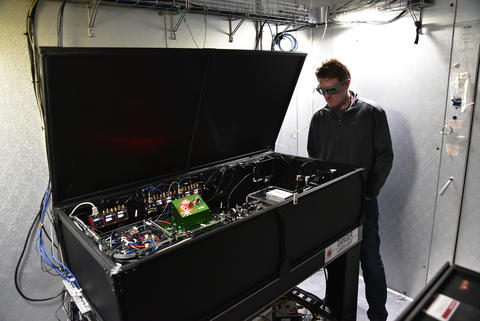Hobby-Eberly Telescope

Telescope Details
Location
McDonald Observatory, near Fort Davis, Texas
Purpose
To gather a large amount of light from distant stars and galaxies for spectroscopy — the technique scientists use to study how light interacts with matter. The telescope’s design makes it ideal for searching for planets around other stars and studying distant galaxies, exploding stars, black holes and more.
NIST’s role
NIST provided a custom-made astrocomb, which precisely measures frequencies, or colors, of light. The astrocomb enhances the precision of starlight analysis by an instrument called the Habitable-Zone Planet Finder — a spectrograph designed to identify Earthlike planets orbiting stars.
Significant discoveries and current status
The NIST astrocomb has operated almost continuously for more than six years, making it the astrocomb with the most uptime.
In 2019, the research team reported in the journal Optica that the NIST astrocomb aboard the Habitable-Zone Planet Finder had provided the precision needed for discovering and characterizing planets orbiting “M dwarf” stars, which make up 70% of the stars in our galaxy and are plentiful near Earth.
In 2021, measurements from the spectrograph and astrocomb enabled scientists to conclude that a planet candidate proposed to be orbiting Barnard’s star, one of the most studied stars, is a false positive.
In 2023, the Habitable-Zone Planet Finder team reported in Science the discovery of a planet the size of Neptune orbiting a star one-ninth the size of our Sun — a finding at odds with leading theories of planet formation.
Other interesting facts
The frequency comb — the technology used to calibrate the Habitable-Zone Planet Finder — was invented in the 1990s for a totally different purpose: to help scientists make more accurate atomic clocks. Frequency combs have since been used in fields ranging from astronomy to atmospheric science to medicine.
Operated by
University of Texas at Austin
Other partners
Pennsylvania State University, Ludwig Maximilians Universität and Georg August Universität
Media


